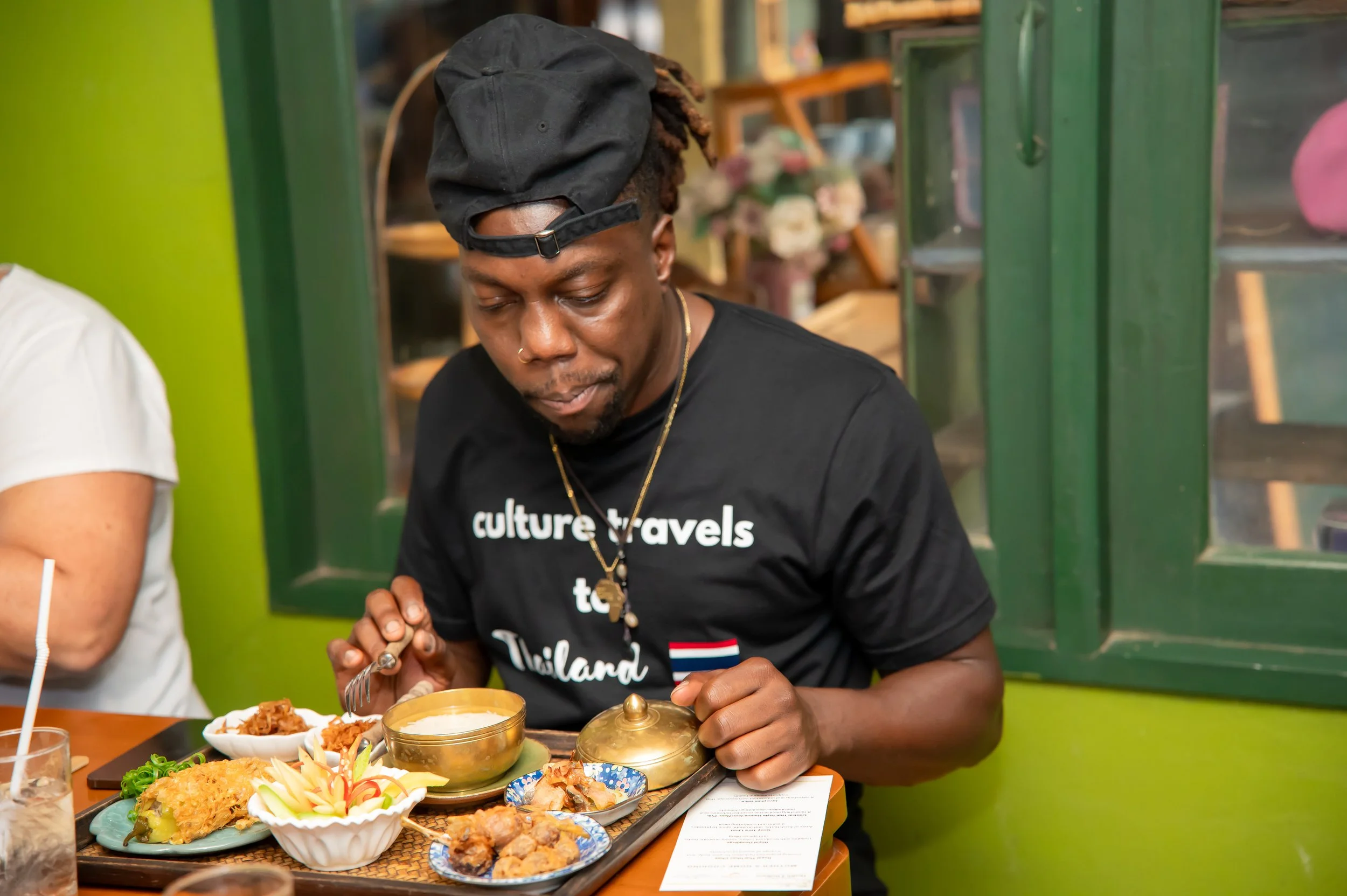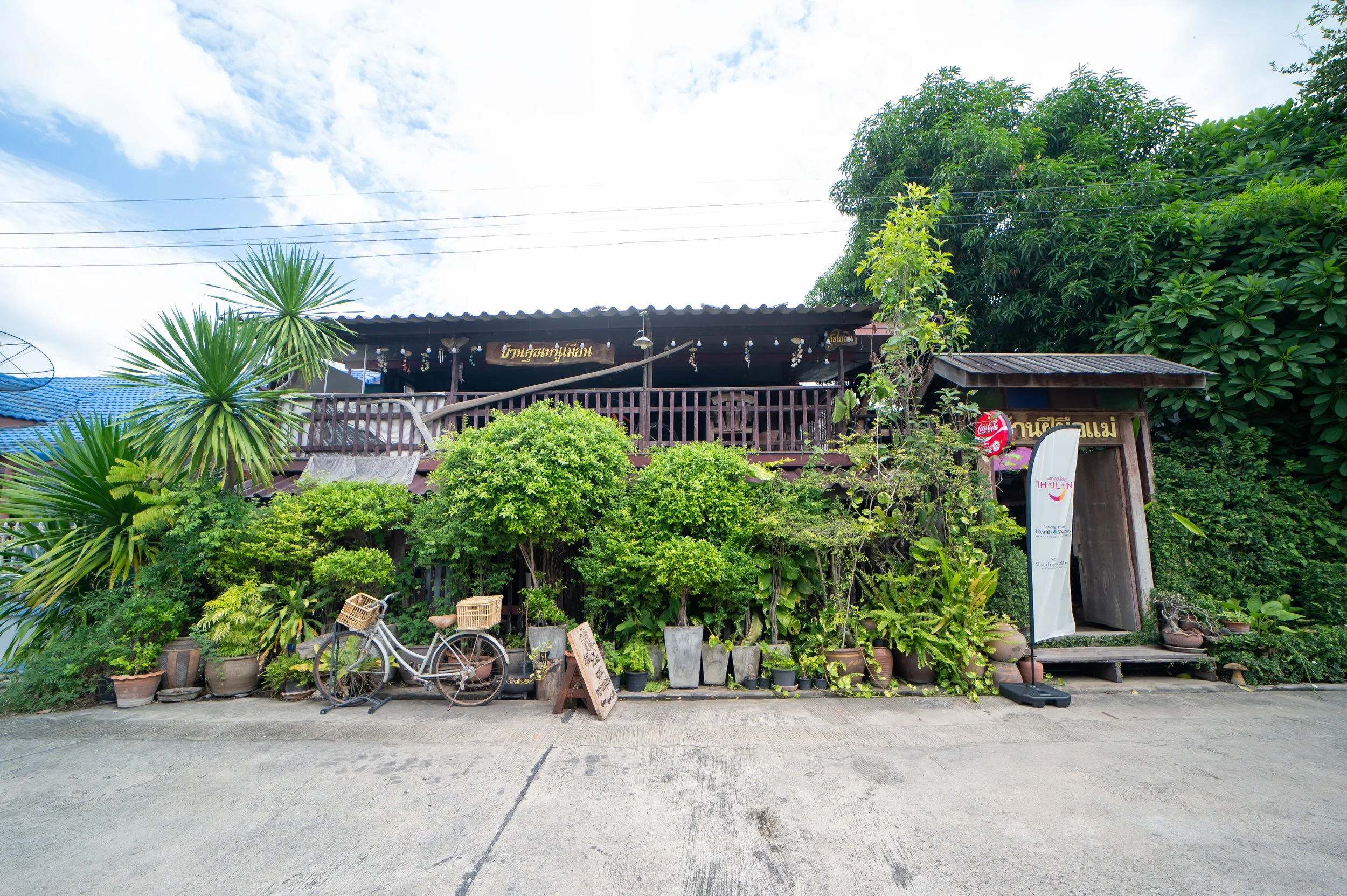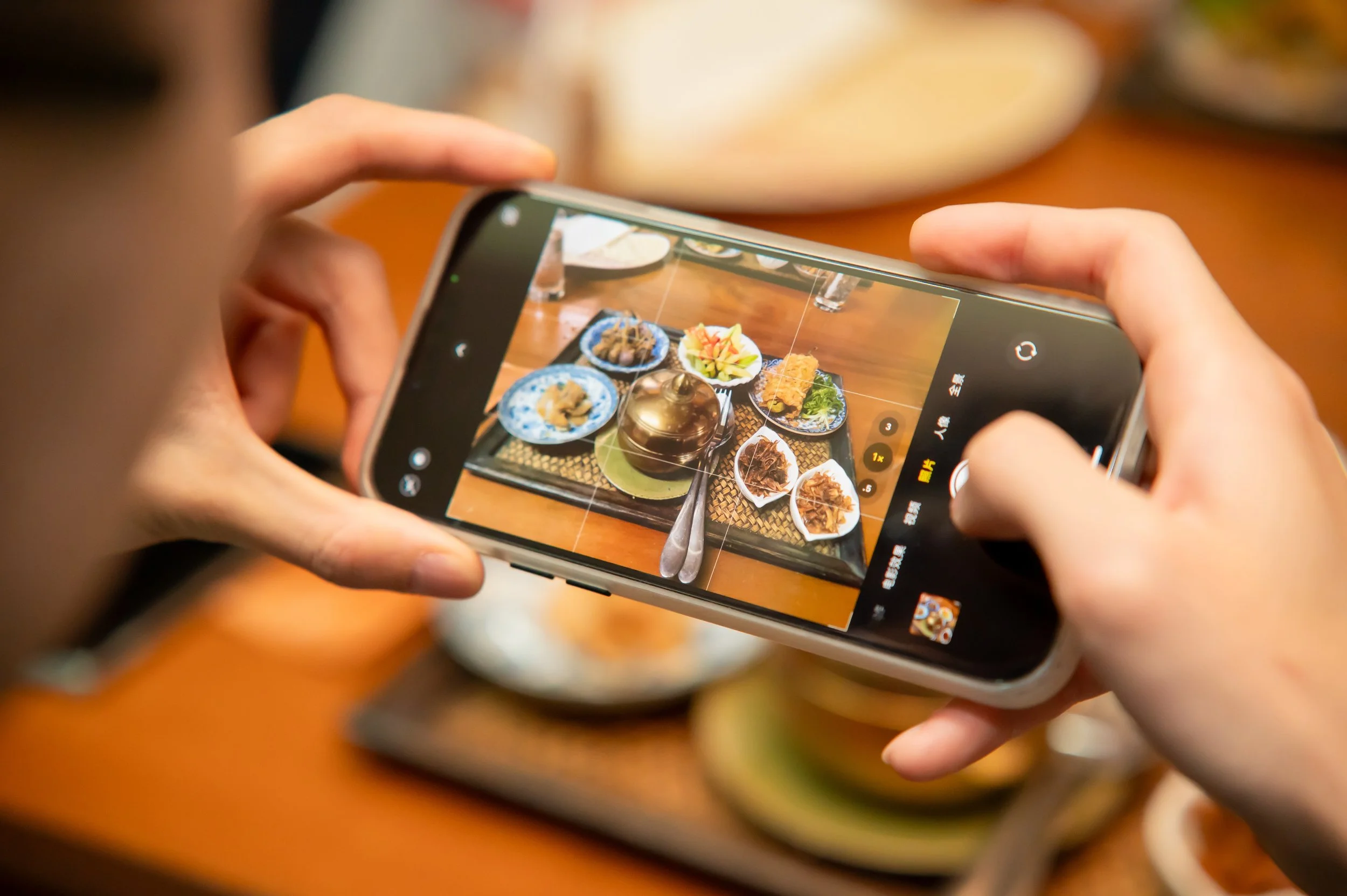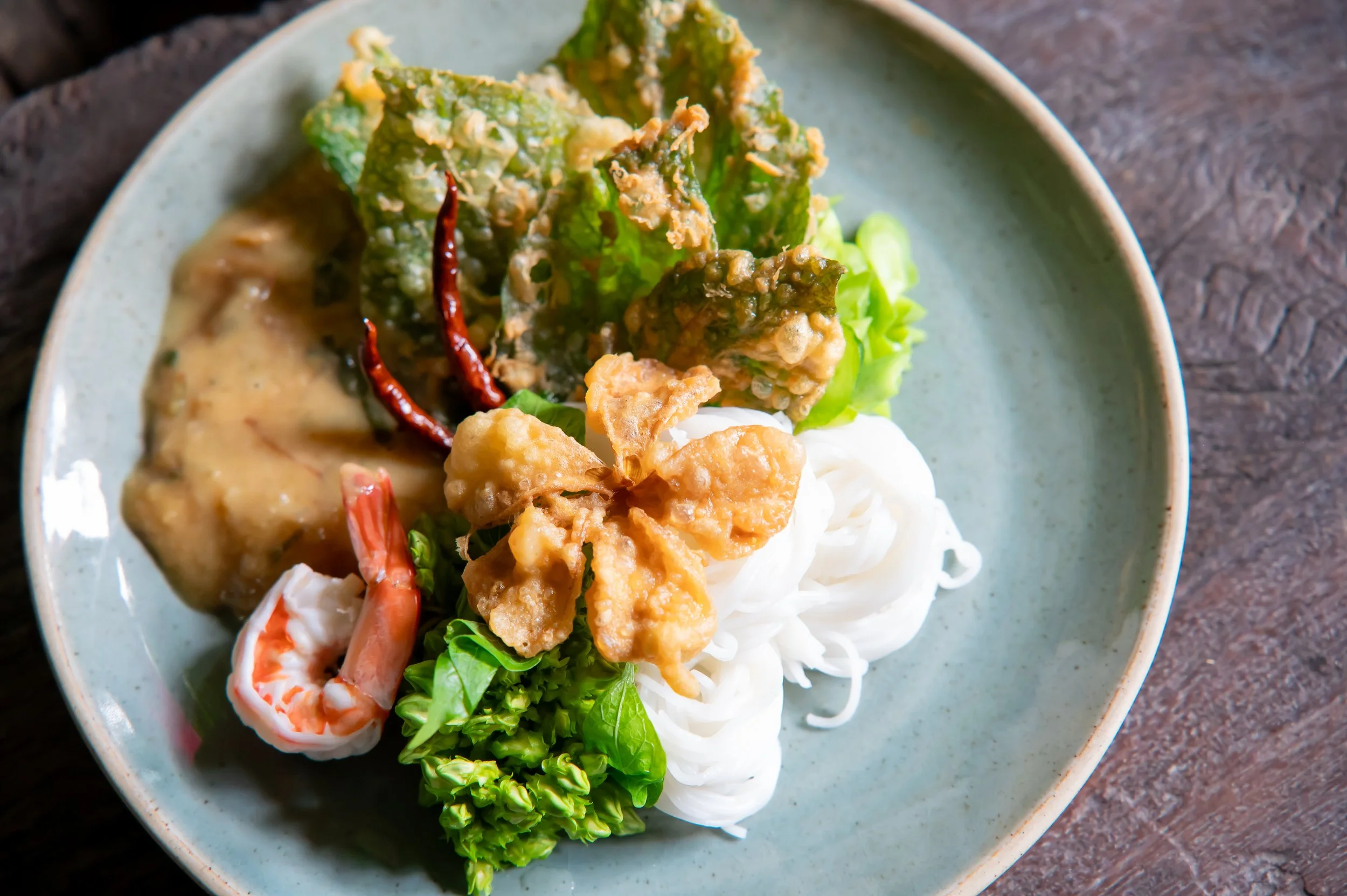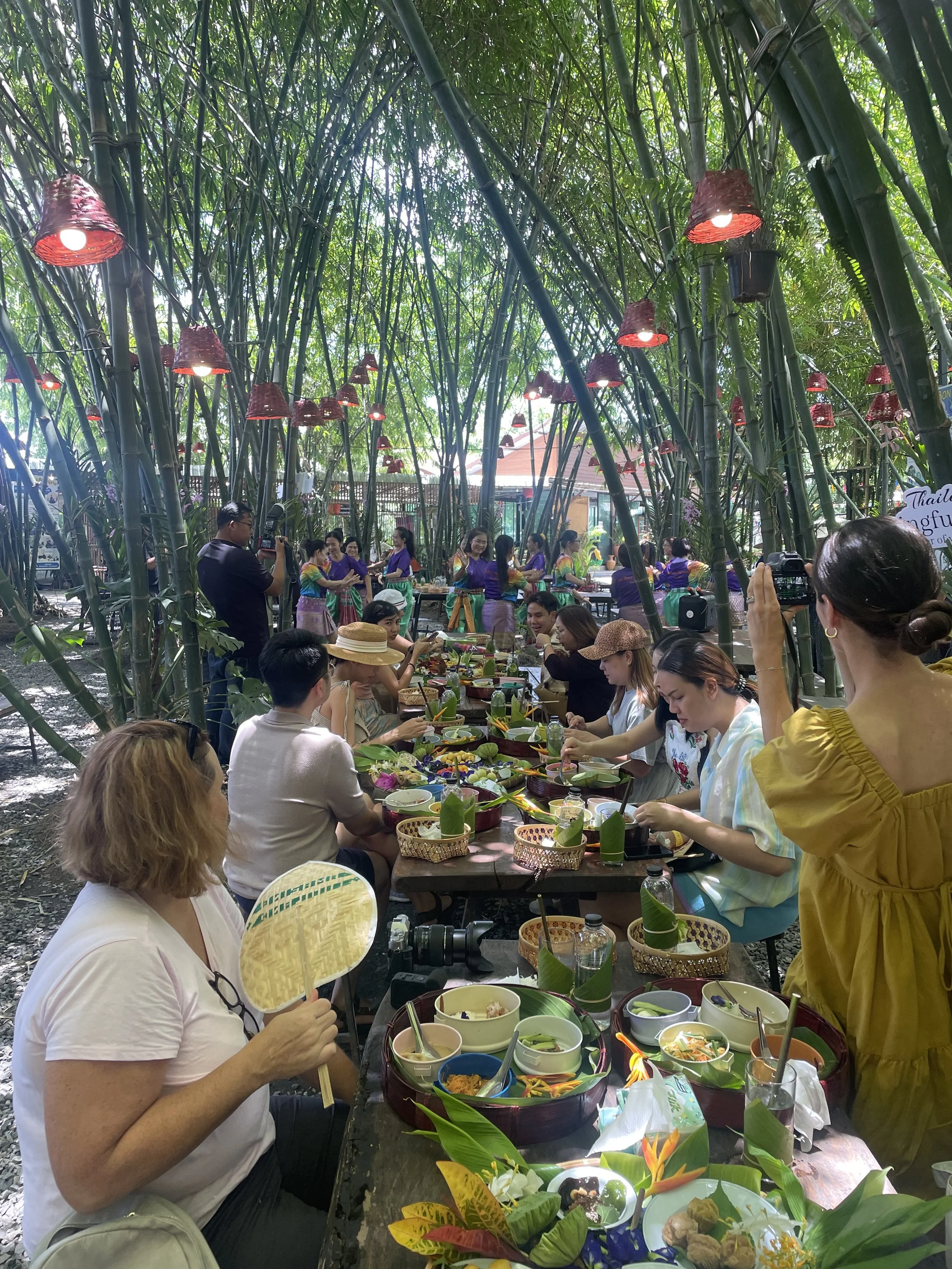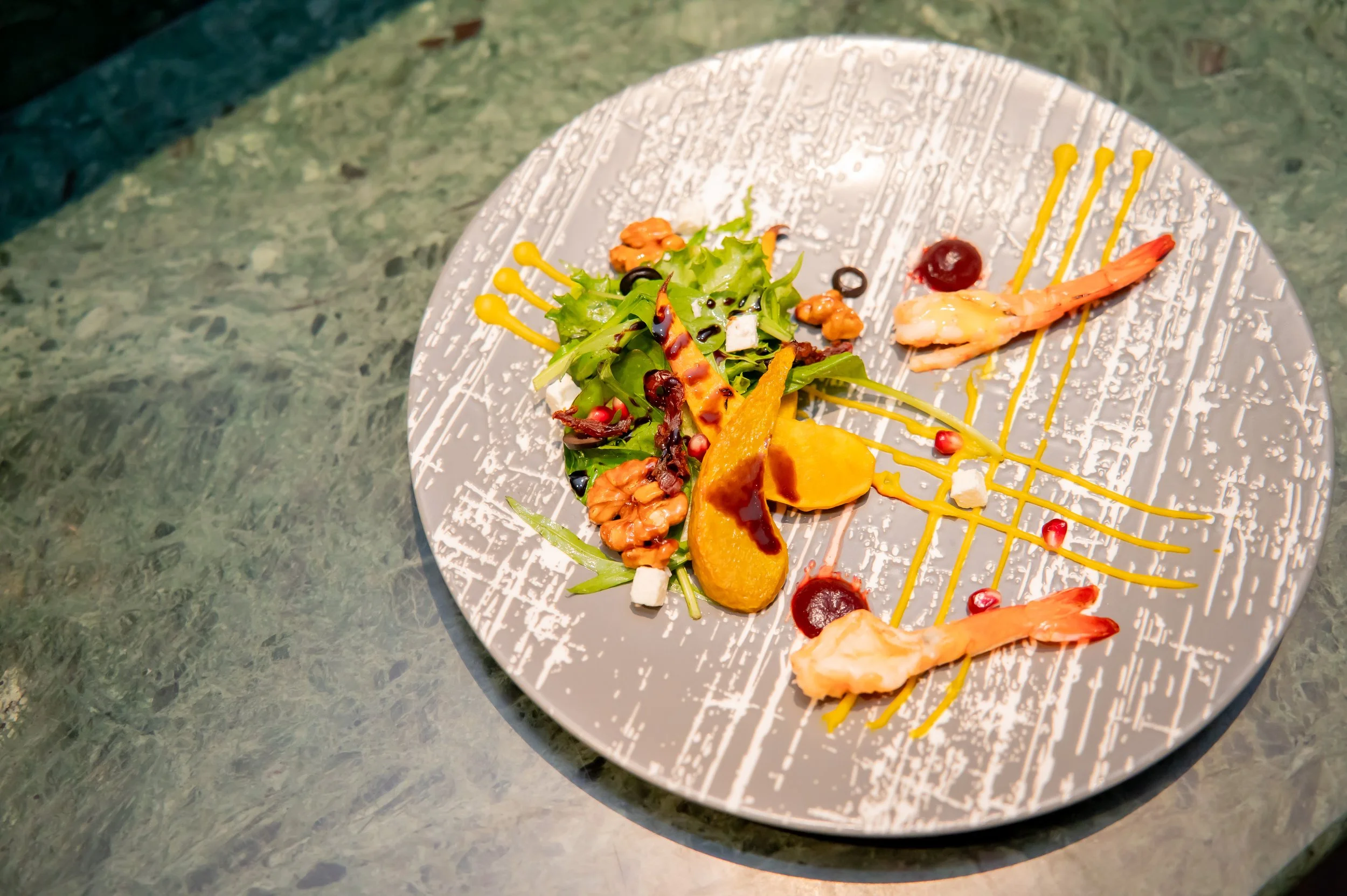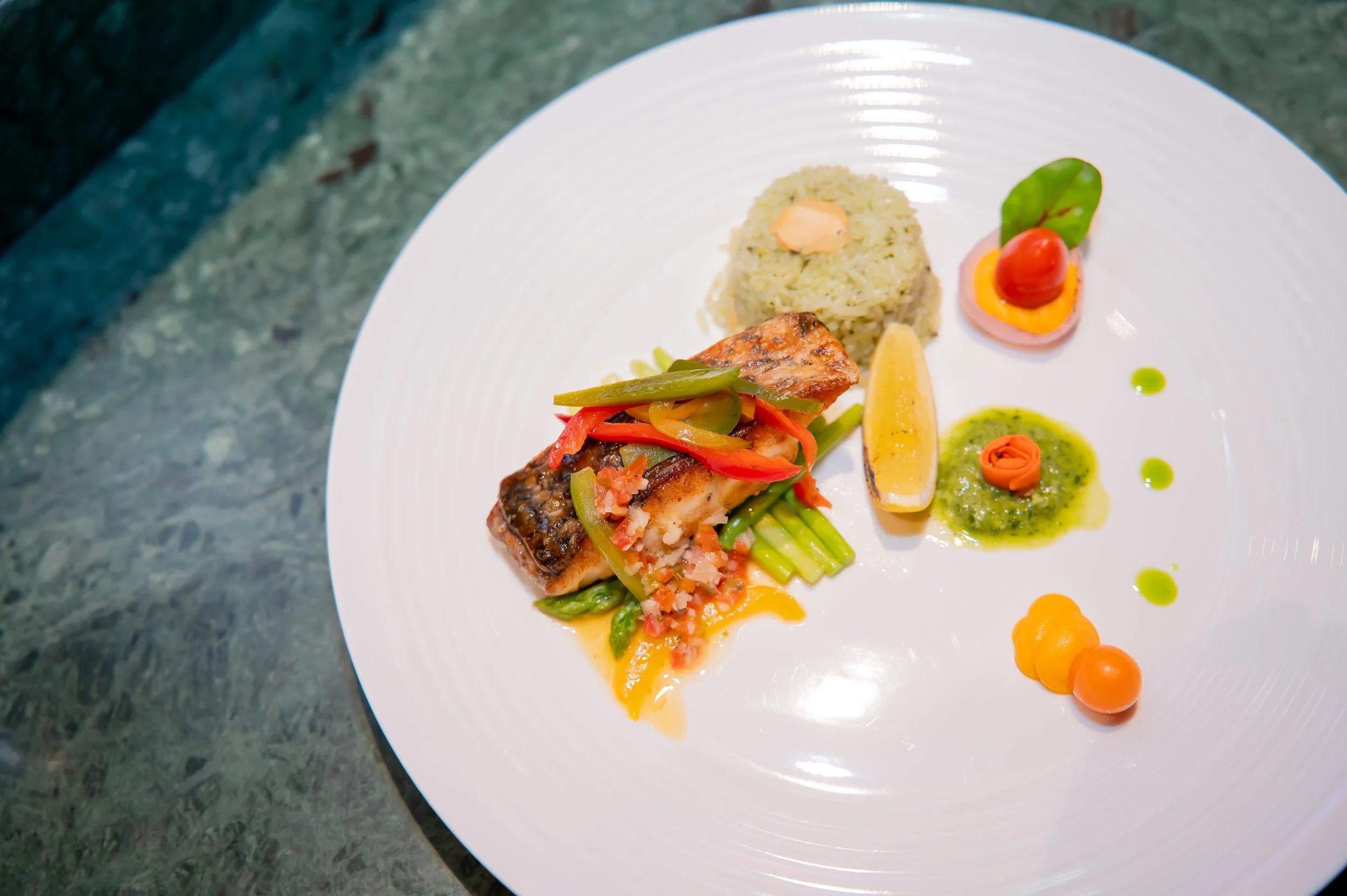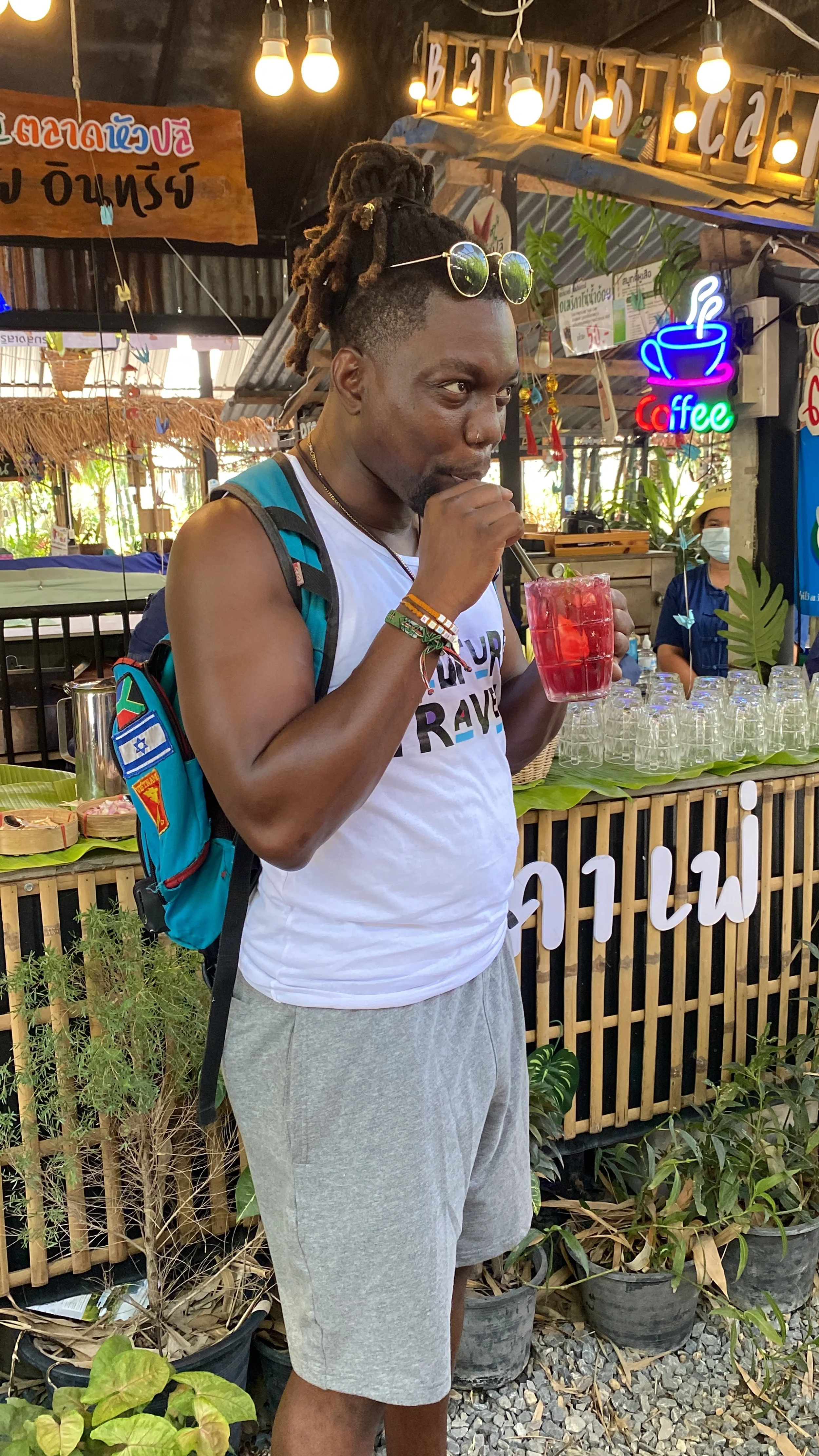Discovering Thailand Through Food: A Journey of Healthful Flavors and Rich History
By Leroy Adams
Picture this: You've just landed in Thailand, a country renowned for its vibrant culture, scenic landscapes, Khao San Road, hospitable people, and, yes— food that's as rich in flavor as nutrients.
If you're a foodie and traveler like me, you're always on the hunt for authentic travel experiences, one that fuses culture with food. In Thailand, we find a culinary paradise where every bite offers a burst of colors and flavors that aren't just picture-worthy but also incredibly beneficial for your health.
Why does this matter to you?
In today's world, travelers prioritize authentic cultural experiences - off-the-beaten-path, home-cooked meals, chopping it up with the little kid sitting at the counter of his parent's market - and food is an essential and satisfying way to learn about the local culture. Additionally, with today's growing emphasis on wellness and clean eating, the Thai approach to cuisine offers an exploration of taste and an embodiment of balanced living.
So, I'll take you on the same gastronomic journey that we experienced during our media trip in Thailand. In case you forgot, our magazine was invited to Thailand for a one-week exploration of their health and wellness travel experiences - massages, meditation, art therapy, yoga, and food. Lots of food. We'll explore the vivid textures and colors of Thai dishes, talk about the food's historical and cultural significance, and uncover each bite's health benefits.
Mother’s Home Cooking
On Day 1, we left the bustling streets of Bangkok and headed for the tranquil province of Saraburi. Before arriving at our final destination, we stopped for lunch at a hidden gem that lived up to its name: Mother’s Home Cooking. No, seriously, the restaurant was a house. We dined at a picnic-style table in the living room! The black and white family photos, box television, large cabinet filled with china, and rocking chairs transport you back to grandma’s house - sit on the plastic-covered furniture while you wait for the magic to come out of the kitchen.
First up, we were served the Thai Khao Chae - a favorite summertime dish in Thailand known for its cooling properties and hydration for the body. Khao Chae, which means “rice soaked in water” - “Khao” means “rice” and “change” means “to soak” is a dish rich in purpose and history. During the time of King Rama II, Khao Chae was made and consumed during the hot season - from mid-March to May. Ice (and air conditioning) were unavailable in Thailand during this time, so the water was kept cool during the hot season by putting it in an earthenware vessel in a shaded place. According to historical records, Khao Chae was first introduced to Thai people by Chao Chom Manda Sonklin, the wife of King Rama IV. Accompanying the king on a palace visit, Chao Chom Manda decided to pass her knowledge in making Khao to the palace kitchen staff. The dish soon became popular and served only to members of the royal family and the aristocracy. According to Thai celebrity chef McDang, who grew up in a Bangkok palace, Khao Chae “is the only Thai dish that can truly be considered royal Thai cuisine.”
Today, the dish best served cold and grounded in traditional ingredients can be enjoyed by anyone. Like our meal at Mother’s Home Cooking, Khao Chae is served with side dishes that complement its taste and look. Below are the side dishes that we enjoyed with our Khao Chae:
Kapi balls - Made from shrimp paste seasoned with wild ginger, shallots, garlic, and palm sugar, all of which are pounded together into a thick soupy mix, placed in a wok, and then heated to reduce the moisture so that a thick paste of highly scented shrimp is created. Afterward, it is allowed to cool and then rolled into small balls.
Stuffed sweet peppers - Stuffed with herbs, spices, and ground pork. Then, they are steamed, allowed to cool, deep fried, and finally wrapped in a lacy egg wrap.
Stuffed shallots - The Thai shallots were stuffed with ground fish meat, herbs, spices, fish sauce, and palm sugar, then dipped in batter and fried.
Shredded sweetened beef or pork - Beef or pork, depending on preference. The meat is torn into strands, seasoned with palm sugar and fish sauce, allowed to dry, and then deep fried.
Fresh fruit & veggies - Raw mango, fresh cucumber, fresh wild ginger, fresh chilies, and fresh spring onions are served together to balance the sweetness of the side dishes and aid digestion.
The first bite felt odd. After it is cooked and rinsed under running water to remove the excess starch, the rice is sprinkled with flower-scented water. A large pot is half-filled with water, and a handful of fresh jasmine blossoms are added. Then, a small flower-scented candle is floated on top of the water, lit, and the pot is covered loosely with the lid for 15 minutes. During the process, the scent from the candles and the natural oils from the jasmine permeate the water. This combination of flowers, water, and natural oils creates a pleasant smell and cooling sensation that fills your mouth and lingers on your tongue.
Each time I took a bite, my brain and palette were like, “Bro, we eat warm rice… with beans, not flowers. What is this?!!” After a few bites, I added the kapi balls, pepper, and shredded beef to the mix. This was an excellent combination of sweet and spicy, adding a nice balance on the tongue. The perfect final touch was sweet and juicy fresh mango and cucumbers.
If you’re in Texas (or anywhere where the heat seems unbearable), I highly recommend finding your local Thai restaurant to try their Khao Chae meal. If you are traveling to Thailand soon, add this meal to your must-have. The hot and tropical climate makes this a perfect dish for anyone looking for a refreshing, flavorful, and tasty meal.
You’d think we were done after this meal, but Mother’s Cooking had more for us to enjoy.
Next is Kanom Jeen Nam-Prik, a meal known for its metabolism-stimulating elements. Kanom Jeen is a popular dish found at street food vendors or fine dining restaurants, made from fermented rice to create soft and thin noodles.
Maintaining a healthy metabolism is vital to generating, storing, and transmitting the energy our bodies need to function daily. The faster your metabolism, the more calories or energy you burn daily. When generating, storing, and transmitting power is out of whack, your body may become vulnerable to metabolic imbalances, leading to health problems. For example, diabetes is a classic example of the body’s inability to metabolize blood sugar properly.
If you’re looking for a metabolism-boosting meal that’s also delicious, look no further than Kanom Jeen. The noodles are typically topped with various curries and enjoyed with fresh vegetables, typically long beans, pickled mustard greens, shredded cabbage, sprouts, and Thai basil leaves. Our meal was served with fresh shrimp, sprouts, sweet curry sauce, and fried seaweed.
Our last meal - yes, there was one more, the dessert - was my favorite. Why? The Java Plum Juice!
It was a typical warm, tropical day in Thailand. After having just consumed unfamiliar, delicious, but unfamiliar foods, my palette appreciated the icy and refreshing Java Plum juice to wash it all down.
The Java Plum juice came with a tray of vibrant delights and packed a savory aroma from the herbs and spices fillings.
I learned that the java plum is an indigenous fruit in Asia. It has a sweet taste and many health benefits, rich in minerals, vitamins, and antioxidants. It is commonly used to treat diarrhea and diabetes and help lower blood pressure. The Barney purple color of the drink was a nice, fun touch consistent with the presentation of the rest of the food. Rich in antioxidants and other nutrients, this drink encapsulated what Mother’s Home Cooking is about: traditional ingredients meeting health consciousness.
Served with the plum juice were the little bird dumplings stuffed with herbs, spices, and bits of pork. The Royal Flower dumplings, Chor Muang, gave us insight into traditional Thai cuisine. The name Chor Muang translates to “purple bouquet” and is regarded as an ancient royal dish recognized by its carved flower-shaped appearance and indigo coloring. The dumplings have a smooth, almost jelly-like texture and are savory with a sweet-salty pork and peanut filling and wrapped in a butterfly-pea-flower-dyed dough. According to experts on Thai cuisine, these dumplings are a lot of work, so we appreciate our hosts taking the time to prepare this treat, which is reserved for special occasions.
An Organic Market with A Soul Train Line
Let me tell you, Day 2 was all about immersive experiences that engaged all of our senses. After our morning meditation at the Hermit Hut—a wooden sanctuary for mindfulness practices—and a hearty breakfast at Pimthiman Restaurant, we ventured to Huapli Market. This isn't just any market; it's an all-organic, sustainable haven.
Picture this: not a single piece of plastic in sight. Shoppers are given straw baskets to shop with and return before leaving.
We were greeted by what can only be described as a "soul train" welcome. No, you didn't read that wrong! As we exited the bus, the market vendors and staff lined up on either side and burst into song and traditional Thai dance. Their excitement was contagious, and before I knew it, I was dancing and singing with them, all of us merging into a swirling, singing blend of locals and visitors.
Stepping into this market was like stepping into an ecosystem that perfectly embodied sustainability principles and local engagement. The market is enveloped by lush farmland, making it abundantly clear just how direct the connection is between the land and your shopping basket. Your dollar isn't just a transaction here; it's a contribution to a community that values its land, produce, and people.
The setting itself was like something out of a dream. Think of a jungle, but make it a marketplace.
Towering trees, their broad leaves providing generous shade, made the Thai heat nothing more than a mild backdrop. Vendor stalls, constructed from bamboo, created a network of aisles that felt more like walking through a forest than a commercial space. And oh, the food! Fresh fruits, hearty rice cakes, and smoothies were so lush you'd think the avocados and coconuts had been picked seconds before blending because they likely were. For the carnivores among us, bite-sized fried meats were served not on plates but on banana leaves. And let's not forget dessert—artisanal ice creams that made you forget every over-sugared scoop you'd ever regretted.
And just when you think it couldn't get any better, remember, this is Thailand—a land where massages are almost as essential as food. Tucked away in the corners of the market were massage stalls offering you a moment of rest, a touch of luxury amid all the natural beauty.
After touring the market and enjoying a massage, you've probably worked up an appetite, so now comes the pièce de résistance—the food. We enjoyed trays of culinary delights making their way to our tables. We had Tom Kha with banana blossom—a fragrant coconut soup that pairs the creaminess of coconut milk with the unique texture of banana blossoms. Then, there was the fried egg with tamarind sauce, a symphony of sweet and sour playing off the richness of the egg. Stir-fried Annamese noodles provided a satisfying base, while Thai Dried Shrimp Chili paste added a zesty kick to elevate the meal. Each dish reflected the Huapli Market—organic, sustainable, and deeply rooted in Thai tradition.
The Pimthiman Experience: Where Luxury Meets Tradition
Let's move on to the evenings at Pimthiman Restaurant, a luxurious restaurant that fuses the best of international and Thai culinary artistry. Picture a candlelit setting with warm tones and textures that make you feel like a realm where tradition and modernity coexist perfectly. The dining experience was a symphony of flavors, colors, and textures each evening.
Let's discuss one dinner I'm still trying to recreate in my kitchen. The appetizer was an oven-roasted pumpkin and grilled prawn salad—a vibrant plate of orange, pink, and green, with textures that combined the earthy softness of the pumpkin with the succulent bite of the prawns. The main course: grilled seabass, garlic pesto fried rice, and a tangy lemon-caper butter sauce. Each bite was a savory exploration capped off with a blueberry pancake drenched in a heavenly lemon cream sauce.
On our last day, as we returned to Bangkok, we stopped for an unforgettable lunch at the Heritage Cafe, another culinary landmark on our gastronomic adventure.
What is it about Thai culture and presenting food on a tower? Is it a remnant of Thai royal culture? Food was literally served in towers. Imagine climbing a culinary skyscraper, with each layer featuring a different dish—Thung Thong (and yeah, Sisqo's tune was in my head, too), tod man kung shrimp cake, tom yam snapper, and a fruit salad to remind you that life is all about balance. I tried my best to navigate this tower of tastes, bouncing from the fruit to salad to the spicy shrimp cake to the rich snapper. Then, it was time to journey back to Bangkok.
How was the ride, you ask? I couldn't tell you. A food coma overcame me as soon as I boarded the van.
Food Equals Culture and History
Let's wrap this up with a look back at the culinary journey we experienced in Thailand. It's remarkable how food can become a vehicle for exploring cultures and understanding histories. From the royal Thai dishes of Saraburi's Mother's Home Cooking, revealing a commitment to health and well-being, to the sustainable wonders of Huapli Market that speak to the community's reverence for the Earth, each meal was a delicious, nutritious story.
But let's remember the overarching lesson: every dish we savored was a sense of tradition and healthfulness deeply embedded in Thai culture. Each meal signified a balance of nutrients, representing Thailand's holistic approach to wellness that harmonizes body, mind, and soul. This isn't just about eating well; it's about living well in a sustainable and enriching way. So, as you prepare to set off on your next adventure, let it be guided by the transformative power of good food and the cultural stories it tells. After all, Culture Travels for good food.

